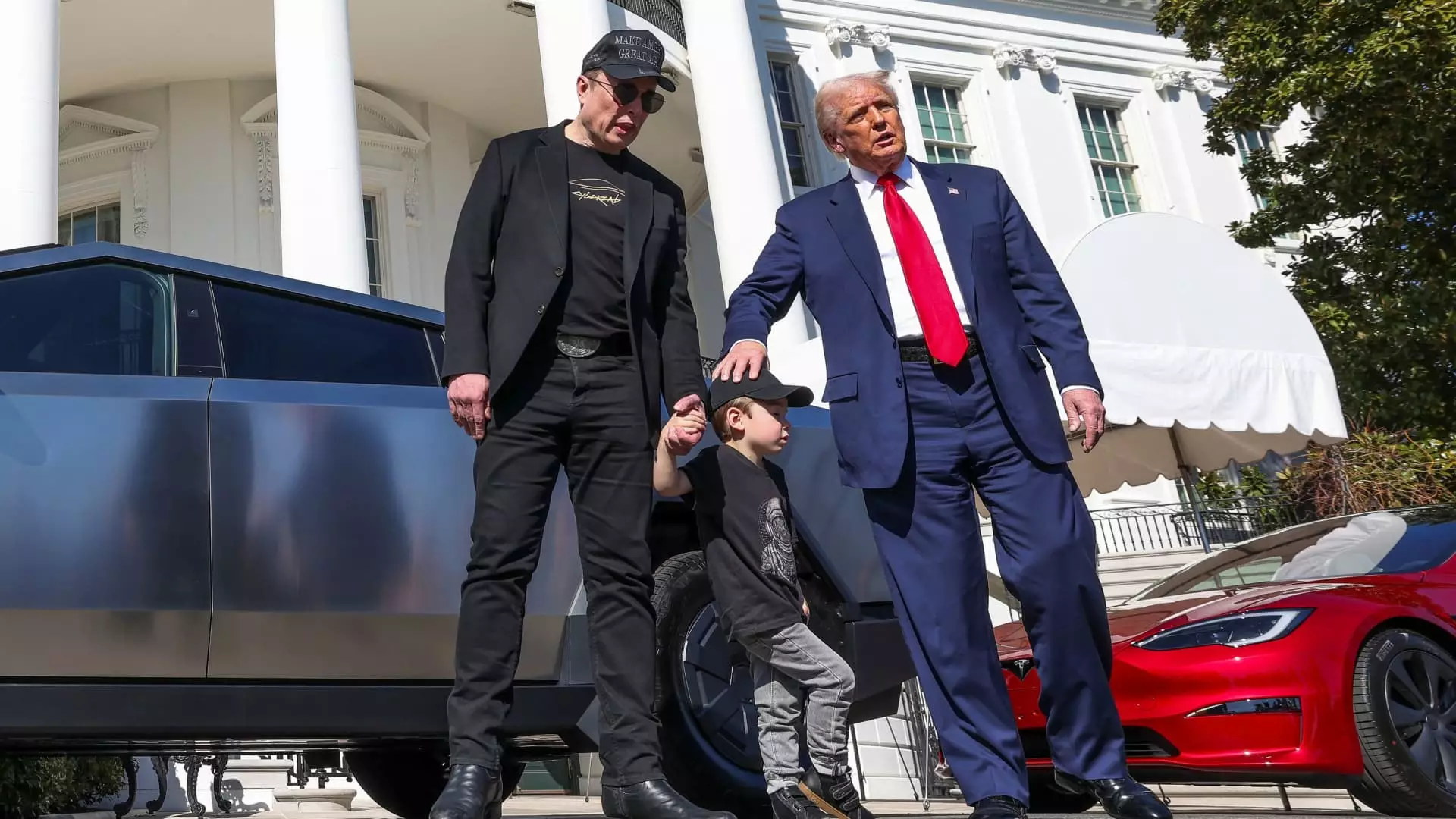Elon Musk, the enigmatic CEO of Tesla, recently voiced his discomfort with high and unpredictable tariffs during the company’s first-quarter earnings call. As the automotive giant grapples with considerable financial challenges, including a staggering 71% drop in net income year-over-year, Musk’s statements highlight a crucial aspect of current economic dialogue. While his relationship with the Trump administration is often framed as close, tariffs represent a rare point of contention. Musk has previously been contentious about U.S. trade policies, revealing a complex dynamic that intertwines his corporate ambitions with broader economic implications.
Musk’s pointed remarks about tariffs underscore his advocacy for predictable and beneficial trade structures. He asserted, “If some country is doing something predatory with tariffs… you have to do something to counteract that.” This perspective positions him as a thoughtful player in the trade landscape, yet some critics might argue that his influence is limited given the overwhelming power of presidential decisions in shaping trade policies. Musk’s acknowledgment of the significant impact tariffs can have on Tesla’s broader operations reveals unspoken fears about the company’s financial aviation if trade tensions escalate further.
Tesla’s Position in the Market
Interestingly, while many U.S. automakers are feeling the pinch from the current trade climate, Musk claims that Tesla is “the least-affected car company with respect to tariffs.” This assertion stems from Tesla’s localized supply chains that mitigate some of the risks associated with import fees. Unlike other automakers who rely heavily on foreign imports, Tesla’s manufacturing strategy is more diversified. However, Musk’s positivity must be tempered with the reality of the considerable reliance on materials sourced internationally, particularly from China.
Despite these reassurances, Tesla’s quarterly performance data paints a more disturbing picture. A 20% decline in automotive revenue indicates troubled waters, challenging Musk’s optimistic rhetoric. The fact that the company is electing not to provide guidance for 2025 until the second quarter brings uncertainty into the equation, marking a stark contrast to the ambitious plans that once seemed within easy reach. Herein lies a conflict: on one hand, Musk appears to lead a robust, agile company; on the other, the financial realities suggest vulnerability that cannot be ignored.
The Complexity of Supply Chains
The multilayered nature of Tesla’s supply chain reveals a vulnerability that Musk cannot overlook. While he touts Tesla’s local strategies for sourcing and manufacturing, there’s no denying a significant dependence on Chinese suppliers, particularly for crucial components like lithium iron phosphate battery cells. The ongoing tariffs magnify risks, as international dynamics shift and trade relationships grow increasingly fraught. Musk’s comments about commissioning equipment for U.S.-based manufacturing underscore this tension: while Tesla aims for self-sufficiency, infrastructure often lags behind the company’s ambitions.
Musk’s narrative highlights a dichotomy—a push for innovation and independence within manufacturing apple pie against external pressures that threaten operational stability. However, despite Musk’s grand vision, the necessity for a robust and flexible supply chain may also reveal an underlying fragility. His comments about exploring non-Chinese suppliers reflect the urgency to adapt to a precarious trade environment. But this transition will undoubtedly take time and could introduce additional hurdles along the way.
The Road Ahead for Tesla
As Tesla maneuvers through this economic tempest, Musk’s leadership style and decision-making will come under increasing scrutiny. His tumultuous relationship with trade policies, illustrated through candid jabs at trade adviser Peter Navarro, signals a broader need for clarity and coherence in strategy. The volatility of the market, the unpredictability of tariffs, and the ongoing geopolitical fray will continue to shape Tesla’s operational strategies in the coming months and years.
Musk’s tendency toward transparent communication can be seen as both a strength and a vulnerability for Tesla. On one hand, it cultivates a sense of trust and engagement among stakeholders; on the other, it risks magnifying scrutiny on Tesla’s performance amid declining revenues and fluctuating tariffs. As the company steps into the future, the imperative for a coherent, adaptable strategy becomes ever more pressing—one that can navigate through external pressures while pursuing ambitious technological frontiers. In the world of high-stakes automotive innovation, the balance between navigating tariffs and sustaining growth will be paramount for Tesla’s longevity and success.

